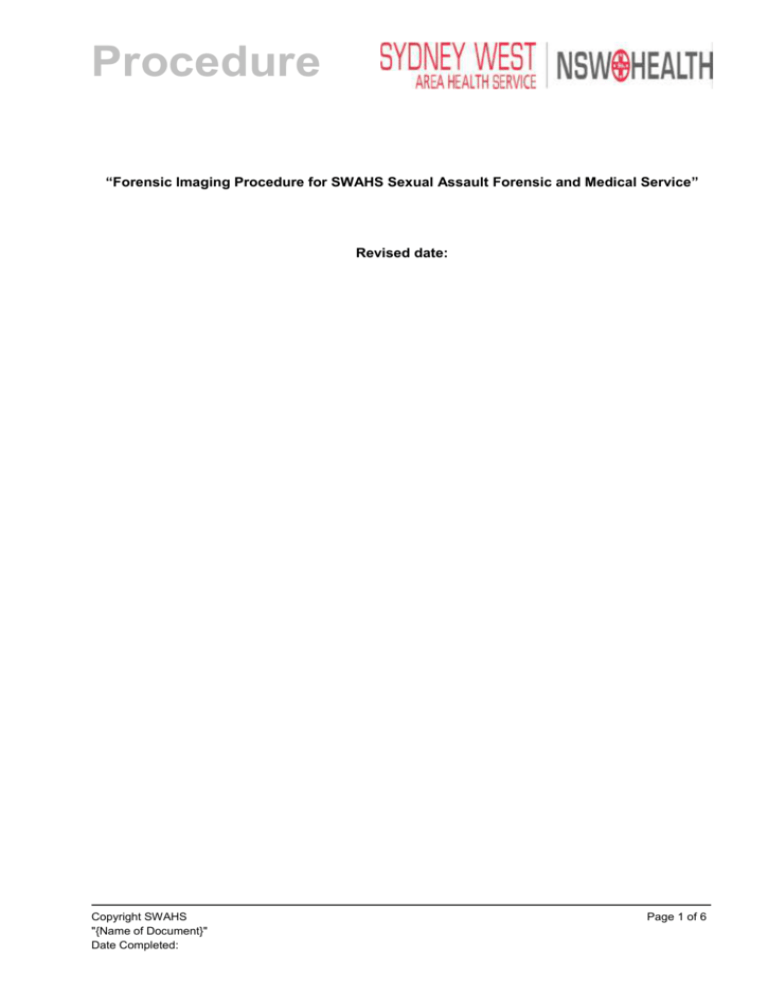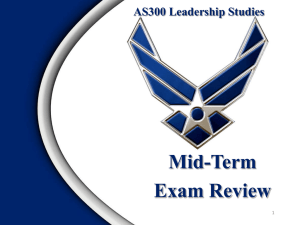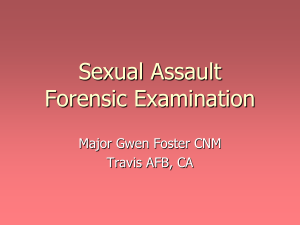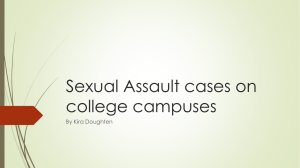Policy 2 Procedure for Forensic Imaging. AU
advertisement

Procedure
“Forensic Imaging Procedure for SWAHS Sexual Assault Forensic and Medical Service”
Revised date:
Copyright SWAHS
"{Name of Document}"
Date Completed:
Page 1 of 6
Sydney West Area Health Service
Purpose
To ensure high quality and confidential forensic imaging collections for all patients who attend
SWAHS Sexual Assault Forensic and Medical Service
Scope
The procedure is intended for all staff of SWAHS Sexual Assault Forensic and Medical Service
who record forensic images for purposes of evidence or medical record.
Definitions
Forensic Imaging refers to either digital images recorded photographically or video images.
Procedure
There is no current directive from the NSW Department of health in reference to Forensic Imaging.
This procedure has resulted from consultation with Nepean police photographers, other clinicians
around the country who collect forensic images and a review of overseas practice.
SWAHS Sexual Assault Forensic and Medical Service clinical staff may collect images for a variety
of reasons including:
(1) For purpose of peer review
(2) Evidence collection
(3) Aide Memoir
(4) Injury Documentation
(5) Medical Record
It is understood that Forensic Imaging is a specialty and people can devote lifetimes to perfecting
this skill. The procedures are intended, therefore, to guide clinicians of varying skills in collecting
and storing any images that may be taken in the course of attending victims of assault, sexual
assault or domestic violence in SWAHS.
Not all cases will require imaging.
Digital Images
The current digital camera being used at both Westmead and Nepean Sexual Assault Units is the
NikonD300.
It is kept locked away for security reasons.
In order to procure digital images the clinician must
(1) Remove the camera from storage
(2) While the camera is off, insert the battery. This should be removed from the camera and left
in the battery charger at the completion of imaging collection.
(3) While the camera is off, ensure the appropriate lens is attached. For most situations this will
be the 18-200mm lens
(4) Turn the camera on.
Copyright SWAHS
"{Name of Document}"
Date Completed:
Page 2 of 6
Sydney West Area Health Service
(5) Pop the flash up, ready for use.
(6) The first image, of any series, will be a patient identifier. This can be either a photo of the
patient sticker (with address blacked out) or a head and shoulder shot of the patient.
(7) Images are then collected, starting with distant shots that locate the injury, followed by
progressively closer images.
(8) All images, apart from patient identifiers, should be photographed with a scale in view.
Adhesive scales are found in both Sexual Assault Units. It is advisable that the initials of the
photographer and the date of the examination is also added to the stickers. A single sticker
can be moved any number of times to different locations and it is rare that more than one
sticker is needed per patient.
(9) All suspected bite marks must be photographed using an ABFO perpendicular ruler, with
the camera held perpendicular to the image.
(10)
Consider photographs of clothing if damaged or stained; photographs of hair state;
photographs of dirt on the body.
(11)
Images can be deleted if, upon looking at the image, they were deemed inadequate.
This can only be done prior to taking the next sequential photograph. No photograph
already sandwiched between 2 other photographs can be deleted as there will be an
obvious gap in the sequential numbering of images. It is therefore important to review each
image as they are taken.
(12)
A final patient identifying photo should be taken. A photo of patient sticker, with
address / phone number blocked out, should be taken to determine the end of a patient
series.
(13)
At completion of photos, the flash is pushed back down, the camera turned off, the
battery removed and placed in the charger and the camera locked away.
(14)
The fact that photographs were taken should be noted in the SAIK protocol, on the
page detailing forensic collections, under other. The number of images captured, including
patient identifiers, should also be noted.
(15)
Photographs that must be sent to Clinicians in order for an Expert certificate to be
written will be inserted into a word document and Emailed with password attached.
(16)
All clinicians must delete all images of injuries once Expert Certificates have been
completed. Patient images are not the property of the doctor / nurse who took the image
but will remain the property of the SWAHS Sexual Assault Forensic and Medical Service.
Video
Videos are collected by way of a colposcope utilising EndoDigi software.
The colposcope may be used for purposes other than collection of genital videos. Video taping of
lesions inside the mouth are one example eg evidence of soft palate trauma following oral assault.
(1) The laptop is turned on
(2) A prompt suggesting ideal screen resolution appears. Select OK.
(3) Open the EndoDigi programme.
(4) A new client profile is set up. Name of the patient, age, MRN, name of clinician and Sexual
Assault Unit are entered.
(5) Select Save
Copyright SWAHS
"{Name of Document}"
Date Completed:
Page 3 of 6
Sydney West Area Health Service
(6) Open the top folder on the right side of the screen called Images / Videos
(7) A small box will appear with an option to select a tick or a cross. Select the tick.
(8) Select the orange bulls eye at the bottom of the screen to get a live view.
(9) As videos consume a huge amount of storage space, attempt to video as little as needed. It
should be rarely necessary to collect more than one minute of video unless there are
several injuries or a difficult hymen examination. It is therefore suggested that the
colposcopic examination be performed prior to videotaping and only the most
representative views collected on video.
(10)
When ready to video, tap the foot pedal. Video will run for 1 minute unless the
footpedal is activated prior to this to stop the video.
(11)
Video can be reviewed by selecting it on the right side of the screen.
(12)
When finished, select “Back” and then “Quit” to exit the programme. If this is done
prematurely, it may be necessary to re-enter the patient as a new patient to be able to
video.
(13)
Videos will only, in exceptional circumstances, be sent to clinicians. A series of
representative still images will be chosen and forwarded to the clinician in a manner similar
to that described for photographs.
(14)
All images must be destroyed by the clinician once reviewed and an Expert
certificate written, as images remain the property of SWAHS Sexual Assault Forensic and
Medical Service.
(15)
Video images are stored as avi.files on the Sexual Assault Drive and an unaltered
copy will be downloaded onto a DVD and stored at the Blacktown Office in a locked filing
cabinet.
Consent
Consent for all images must be gained prior to the collection of those images. Consent should be
written and the Sexual Assault Forensic Photographic and Recording Consent (SWHR-0353) form
should be used for this purpose.
All clinicians who are intending to capture images of patients are responsible for explaining the
form to the patient and the additional options for clinical review and education / clinical
presentations. Clinicians must explain to patients where images can end up and who may see
these images in a very clear and unambiguous way.
Videotaping of paediatric (prepubertal) genital examinations will be done in all cases except where
consent is expressly withheld.
The collection of forensic images is voluntary and no patient will be coerced into having images
taken. All patients have the right to review their images, either immediately after examination or at
a time to be organised in the near future.
Images, once collected, become part of the medical record and will be retained for a period of 30
years, in keeping NSW Department of health guidelines on sexual assault records.
Any patient who has images collected must be given the Sexual Assault Forensic Photographic
and Recording Withdrawal of Consent form (SWHR-0354). This informs patients of the procedure
necessary to withdraw their consent for use of images for educational / clinical presentations or
clinical review but not for their medical record / evidence for Court.
Copyright SWAHS
"{Name of Document}"
Date Completed:
Page 4 of 6
Sydney West Area Health Service
Any patient who subsequently becomes distressed about their decision to have images collected,
and who is unable to be adequately reassured by their sexual assault counsellor, should be
referred to either of the Sexual Assault Staff Specialists.
Review of Images
All photographs and all videos collected by Sexual Assault clinicians will be reviewed as part of the
ongoing clinical governance of this Area Health Service.
Release to Police
Images will be classified as sensitive and non sensitive.
Sensitive images are images of exposed nipple / areola or of genital area.
Non sensitive images are all other images including buttocks.
Non sensitive images can be released to police utilising the same request procedure as for the
Expert Certificate.
Sensitive images will only be released from the Blacktown Sexual Assault Forensic and Medical
Office. NSW Police will be required to sign upon receipt of images.
Risk Rating
Risk is low (based on probable non compliance with very low consequences). Many Australian
Sexual Assault Units do not have the technology to allow imaging. Failure to image correctly
should be counterbalanced by high standard injury documentation utilising verbal description and
diagrammatic charting.
Implementation Plan
All Sexual Assault Staff will undergo rudimentary training in Forensic Imaging and will receive a
copy of the Imaging Procedures. All sexual assault counsellors should be aware and familiar with
the practices of imaging likely to be undertaken by the SWAHS Sexual Assault Forensic and
Medical Service and should receive ongoing education on how to approach and deal with any
patients who may subsequently regret their decision to have images collected.
References and Related Policies
Procedure for Maintaining Confidentiality of Victims of Sexual Assault / Domestic Violence
presenting to SWAHS.
NSW Health Privacy Manual version 2 2005
Version History
Date of Issue
Copyright SWAHS
"{Name of Document}"
Date Completed:
Document
Version
Change Details
Author
Page 5 of 6
Sydney West Area Health Service
Copyright SWAHS
"{Name of Document}"
Date Completed:
Page 6 of 6





